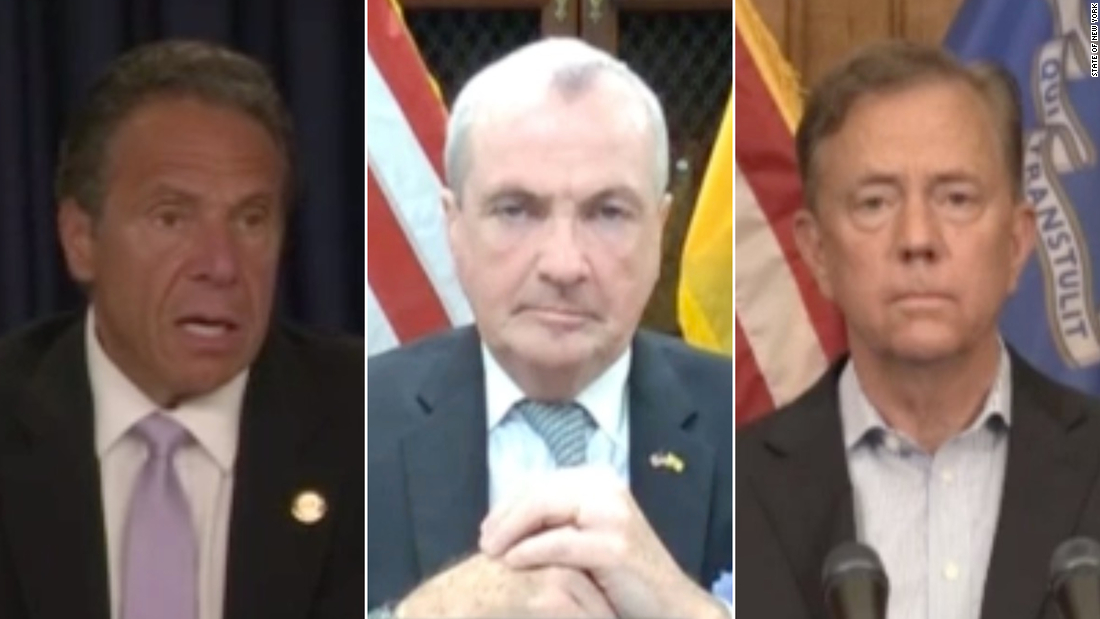[ad_1]
New York Gov. Andrew Cuomo, New Jersey Gov. Phil Murphy and Connecticut Gov. Ned Lamont said the travel advisory applies to anyone coming from a state with a positive test rate higher than 10 per 100,000 residents over a 7-day rolling average or a state with a 10% or higher positivity rate over a 7-day rolling average.
“We have to make sure the virus doesn’t come in on a plane,” Cuomo said.
“We worked very hard to get the viral transmission rate down, and we don’t want to see it go up,” he added.
As of Wednesday, the advisory applies to Alabama, Arkansas, Arizona, Florida, North Carolina, South Carolina, Washington, Utah and Texas. It begins tonight at midnight.
The announcement is a 180-degree flip from just a few months ago, when the tri-state area, and New York City in particular, was the epicenter of the pandemic.
As of Wednesday, 26 states reported an increase in cases in the past week compared to the week prior, and that increase has been particularly stark in heavily populated states like California, Texas, Florida and Arizona.
How the restrictions will work
Each of New York, New Jersey and Connecticut will be responsible for its own enforcement of the quarantine. The states’ health commissioners will pursue an aggressive public relations campaign at airports, highways and other locations.
In New York, Cuomo said, those violating the quarantine could be subject to a judicial order and mandatory quarantine, and fines are $2,000 for the first violation, $5,000 for the second violation, and $10,000 if you cause harm.
Gov. Murphy of New Jersey said the advisory applies to everyone, including New Jerseyans returning home.
“This is not a polite recommendation, this is a strong advisory built on the back of the healthcare professionals,” he said. “We are asking folks to take on a big amount of personal responsibility here, to do the right thing for themselves as well as for their families, communities and the rest of us.”
When asked about the possibility of fines, he said the health commissioner “has within her powers to directly address an individual who is non-compliant.”
Gov. Lamont of Connecticut said the governors “reluctantly” decided to institute the travel advisory.
“The northeast region has taken this seriously,” he said. “But we’re not an island. And as we look around the rest of the country, you know, we have seen not just spikes, but we’ve seen real community spread.”
He described the advisory as voluntary but considered it “urgent guidance.”
Lack of national infrastructure
Even now, 19 states have no requirements for residents to wear facemasks — the simplest and cheapest layer of defense against a virus with no vaccine and no widely effective treatment.
Indeed, Gov. Cuomo has openly mocked other states that he said were acting politically rather than scientifically.
“New York went from one of the highest infection rates in the country to one of the lowest because we made decisions based on science — not politics,” he said Tuesday. “We’re seeing in other states what happens when you just reopen with no regard for metrics or data. It’s bad for public health and for the economy, and states that reopened in a rush are now seeing a boomerang.”
Still, Dr. Richard Besser, former acting director of the US Centers for Disease Control and Prevention, said no state has yet effectively reopened its economy safely.
“We have to figure out how to make that transition in a successful way, or every state that reopens, even those that have done a really good job at tamping this down, are going to see pretty dramatic rises and we’re going to end up back to where we were,” Besser said.
CNN’s Melanie Schuman and Kristina Sgueglia contributed to this report.
[ad_2]
Source link




